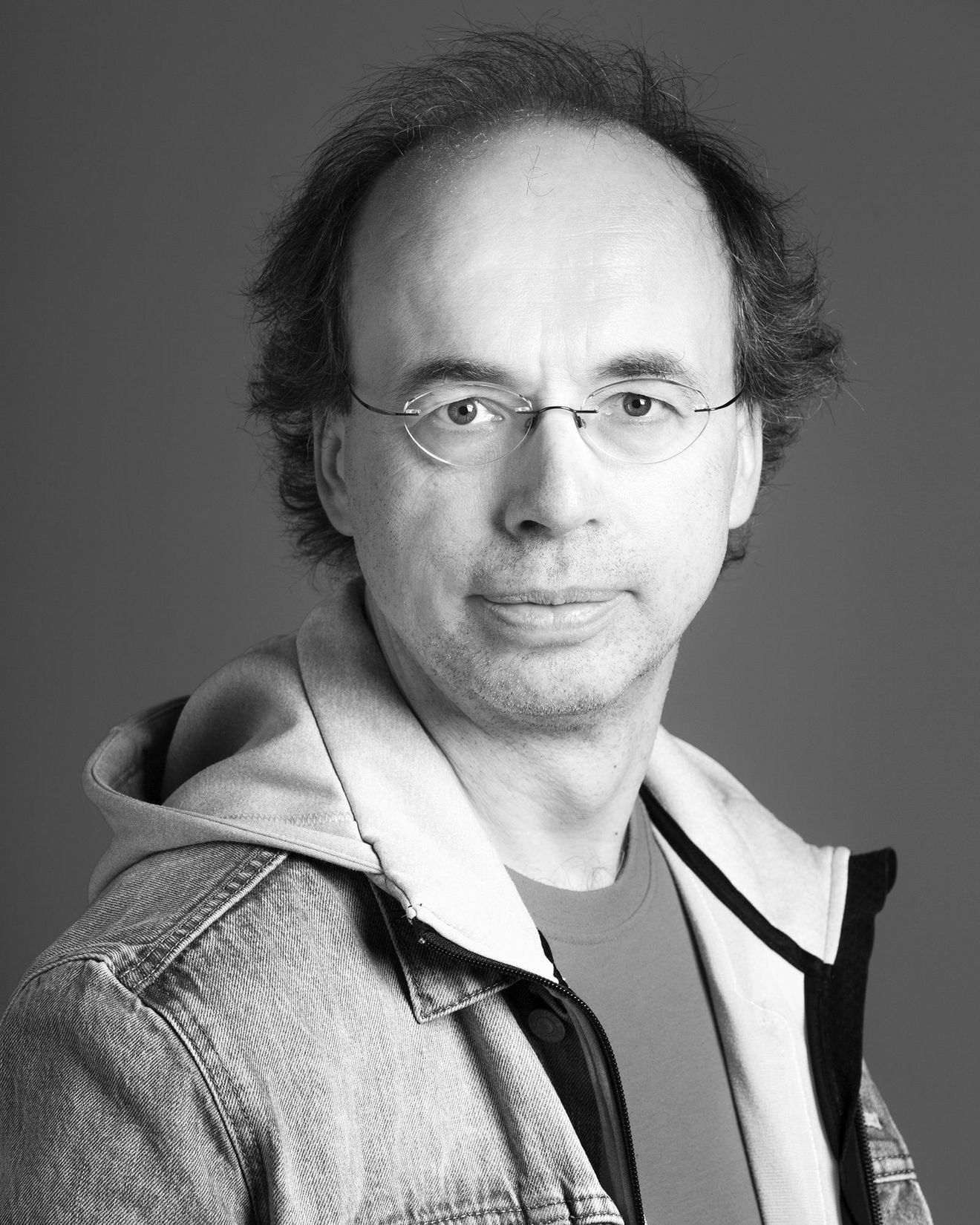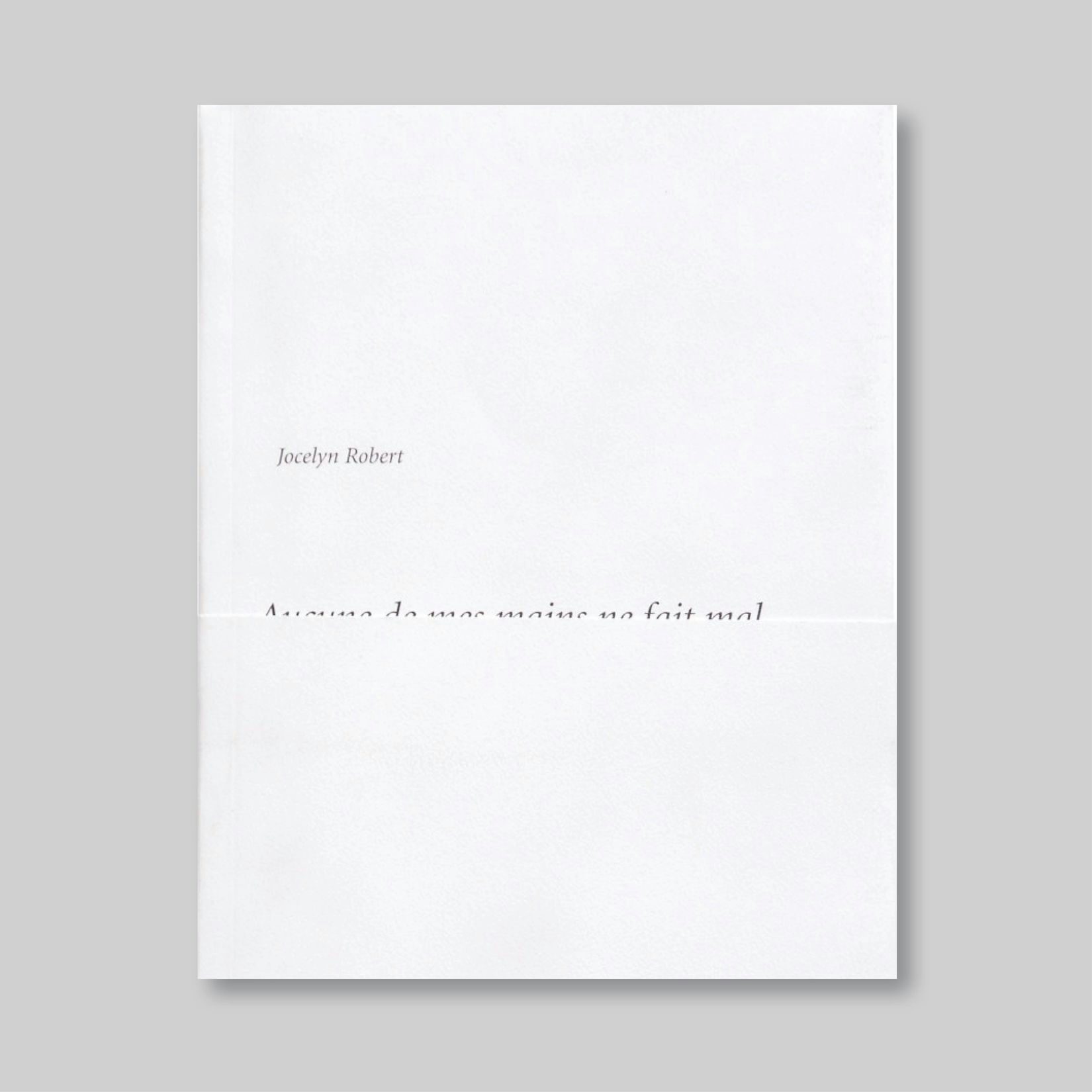
Jocelyn Robert
2005.02.24 - 04.16
Excerpts from an interview conducted by e-mal, to be published in the exhibition catalogue.
Marie Fraser : People often see your works as sound experiments, even though images almost always play an important role in them. What seems to me quite particular in the manipulation of the image with respect to sound is that the two do not necessarily coincide, although they are often from the same source. On the contrary, they seem caught in a strange relationship of translation and disassociation that opens onto unusual spaces and temporalities. It’s as if our own experience has to reconnect them. This phenomenon is present in several of your works. Aucune de mes mains ne fait mal (neither of my hands hurt) seems to me to push this process further, because the image is broken down on a technical level to produce its own sound, unless the reverse is true and it reconstitutes itself.
Jocelyn Robert : There is no “manipulation of the image with respect to sound.” The “even though” at the outset misstates the question. If people see my works as sound experiments, it’s simply because it is easier to distribute sound recordings than other kinds of work; for this reason, my sound works are better known. But this is purely a result of the way my works are distributed and has very little to do with the root – with my way of working.
My first exhibition, Bonjour Dürer, which was made up of three thousand photographs, contained no sound at all. My first videos, in 1993, had no sound either. In fact, until 2001, my videos contained only images and movements. And the book I will publish this spring has nothing to do with sound either. However, it would be easy to show that the three thousand photographic images in Bonjour Dürer were not really photographs but in fact constituted an immobile film.
The need to separate a work’s reading into “sounds,” “images,” and other things always surprises me. I remember a discussion I once had with the American artist Paul Demarinis. I mentioned to him an article in which a theoretician maintained that we should increase the number of human “senses.” Essentially, this scholar said that the division of perception into five senses dated from the Middle Ages, and that it was time to bring it up to date. He himself proposed a minimum of fifty-four senses, in which, for example, there would be different designations for the touching of cold surfaces, texture, pressure, and so on. Paul replied that he understood the idea, but that it dated from after the Middle Ages and was more rooted in the nineteenth century than in the twentieth, and that, in his view, the number of senses today should be “one.” This made me smile with relief.
Also, when you write “it’s as if our own experience has to reconnect them,” you’re right, except that it’s much more than these two, and the fact is we should stop dividing our experience into two (or three or four).

M.F. : The idea of an immobile film is really very beautiful. . . . There is an aspect of this, moreover, in your installation for VOX. In one of the images, the movement is so slow that it appears almost halted, while in the other the multiple loops constantly break up the sequence and make the segments of images turn back upon themselves through the force of repetition. We have the impression that the man walking, on the one hand, and the hand writing, on the other, are still, even if after a moment we manage to perceive their movement.
But I’d like to pursue the discussion of sounds and images just the same. If it is not a division or a breaking down, how would you describe what goes on between them or at each of their limits? Isn’t one being translated into the other, isn’t there a passage in which a transformation, or a gain or a loss, comes into play?
J.R. : Yes, there is a direct correspondence between a part of the image and a part of the sounds. The screens I designed for the project are made of a translucent surface, behind which is a series of photoelectric circuits. These circuits transform the light impulses into electric impulses, which are directed toward and activate electromagnetic relays. At the same time, these relays produce sounds – their own particular clacking sound – and light, by means of an electroluminescent diode that is attached to each of them. These sounds are added to another sound in the installation, that of a piano, which is emitted by twenty-three loudspeakers, in addition to the sound coming from a manipulation of images, while the lights are added to those of the video projections.
This direct correspondence, however, is filtered. Not all the information in the image is transmitted. For example, the photoelectric circuits react to the degree of the light’s intensity, not to colour or to the significance of the image. In addition, they are either activated or not: there is no in-between. There is thus a loss of content between the video image and its influence on the rest of the installation. Nevertheless, something is gained: these video images, which occupy only a reduced portion of the screen’s surface (about 60 x 80 cm), are spread out by the relays to a size approximating 4 x 8 metres. In addition, the pixels are audible.
M.F. : So we hear the image thanks to the pixels and we see the sound thanks to the luminous flickering of the relays. I think I now understand better your resistance to separating our reading of the work into sounds and images in favour of a more global sensory perception (global is not exactly the right word, but it’s the one that comes to mind at the moment). I remember a conversation we had about your project, in which you made a parallel between it and the functioning and structure of memory. Memory also works through transference and “filtering,” to use your term; it involves gains and losses, as Freud explained by attaching as much significance to what is forgotten as to what is remembered. Your installation is also marked by the memory of your piano lessons, which, moreover, are found in several of your works.
J.R. : It’s true, I’m more interested in the relationships among a project’s components than I am in analyzing one aspect or another in isolation. The relationship between seeing sound and hearing the image is a good example, but we could also approach the installation as the translation of a movement on a surface into a movement in space, or in terms of the relationships among the various parts. We could also speak of the inevitable convergence of viewpoints by the visitor. All mental images are amalgamations of a multitude of points of view, and this is one of the connections between the installation and the way memory functions. The different parts are designed to be incomplete, a little like the pieces of a jigsaw puzzle. Each one forms only a part of the picture, but each also has the potential to be “in tune” with a variety of others, as though there were several possible memories in the project. Just like memory, it has to be reconstructed.
As for the piano lessons, they were truly influential, and loaded. It’s hard for me to say why exactly. Roger Callois, in La nécessité d’esprit, said, “. . . it is immediately terrifying to think that people not only come upon language as something ready-made, but that they are obliged, in order to make the least word understood, to sacrifice all the nuances particular to their own concrete experience to the fiduciary meaning which, for better or worse, has generally been given to this word . . .” There is something of this in the piano lessons: as the framework for discovering this superb sound-making machine, they are, first of all, a process of grammaticalization, and it is perhaps this ambiguous and paradoxical experience, a mixture of marvel and indoctrination, that has been imprinted on my memory. And we are back to two elements in tension. . .

